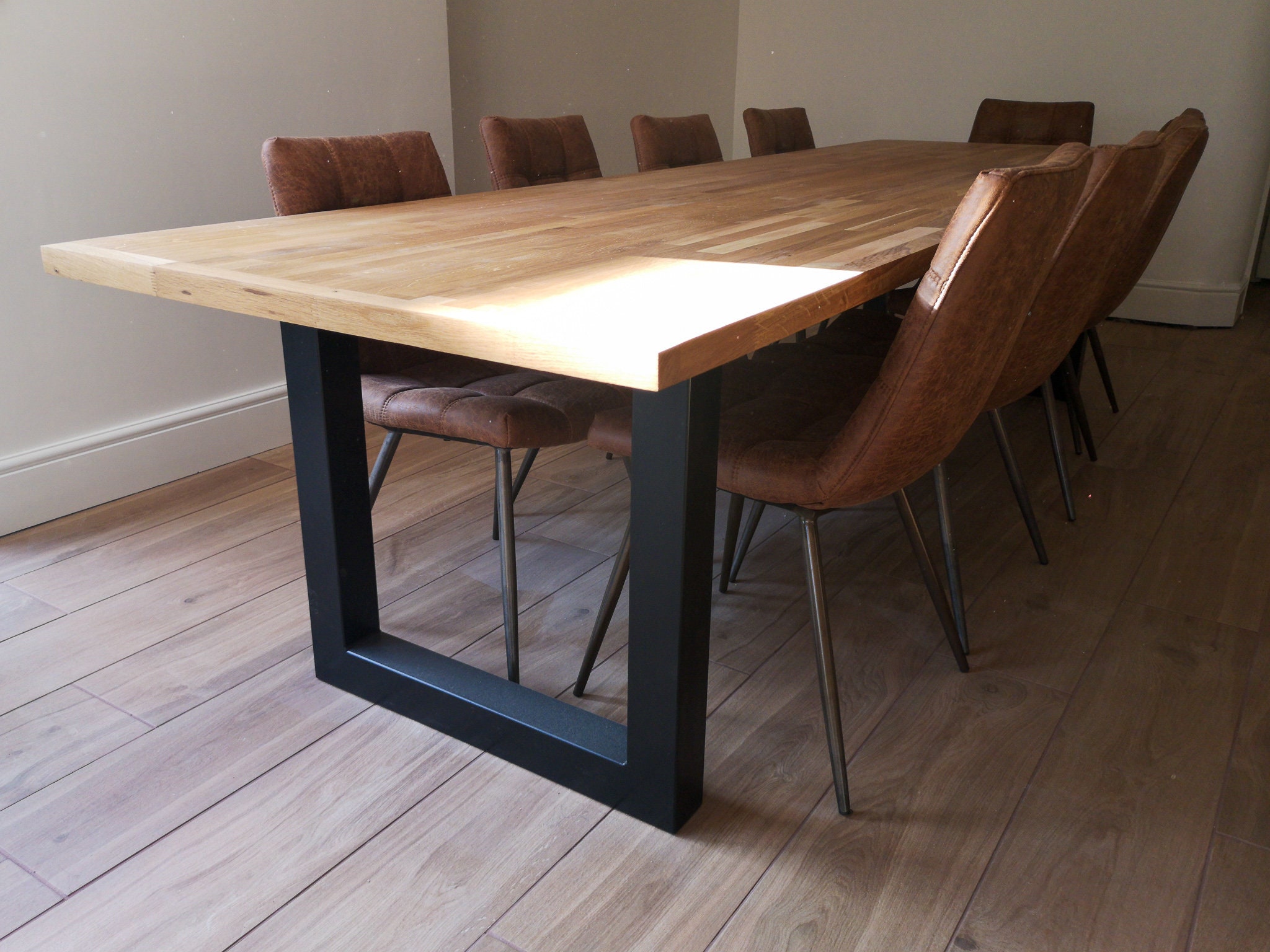An In-depth Consider Table Leg Styles: Finding the Perfect Suit
Picking the appropriate dining table leg design is important for both visual charm and functional capability. Typical 4 legs provide ageless style and security, while the stand base supplies increased legroom and a contemporary look. For those with larger tables, trestle legs guarantee sturdy support, whereas barrette legs present a mid-century modern vibe with their minimal style. The x-shaped legs mix contemporary design with improved stability. Each of these choices brings special benefits, making the selection greater than just a matter of preference. Explore better to find which style completely enhances your eating room and lifestyle.
Conventional 4 Legs
Among the different kinds of table leg styles, the standard four-leg layout remains an ageless selection for many households. This traditional setup uses a harmonious mix of capability and aesthetics, making it a seasonal fave. Four legs give balanced assistance, making sure the table stays secure and efficient in birthing substantial weight. This is especially helpful for households that regularly hold huge gatherings or use their eating table for numerous objectives, such as work or crafting.
From a visual perspective, the traditional four-leg style can be conveniently adjusted to various interior designs. Whether crafted from timber, steel, or a mix of products, these legs can be delicately sculpted, smooth and minimalistic, or anything in between. Their convenience allows them to enhance both rustic and modern setups flawlessly.
In addition, the uncomplicated framework of the four-leg design promotes ease of activity and placement within a space. Unlike more complicated bases, this style reduces blockages, providing adequate legroom for diners. In recap, the typical four-leg dining table leg style weds sustaining sophistication with practical functionality, making it a sharp option for those seeking both form and feature in their dining furniture.
Pedestal Base
Usually celebrated for its classy and space-efficient design, the stand base is a prominent alternative to the typical four-leg arrangement in eating table leg styles. This distinctive base normally includes a solitary main column supporting the tabletop, which can vary in kind, from ornately carved wood to smooth, modern metal. Among the primary advantages of the pedestal base is its ability to make the most of legroom and seating adaptability. Without corner legs, diners are paid for better liberty of activity, making it a suitable choice for round and oblong tables that promote more intimate and comprehensive gatherings.
The central column itself supplies a canvas for complex styles and artistic expressions, including an aspect of visual interest beneath the table. In recap, the pedestal base combines capability with style, making it a refined and practical choice for varied dining environments.
Trestle Legs
Trestle legs offer a robust and classic structure for dining tables, defined by their straight cross-bracing and strong assistance light beams. Stemming from medieval times, this style has actually developed yet kept its crucial structure, making it a seasonal favorite in both traditional and modern settings. The main trestle beam of light, frequently supported by 2 or more vertical posts, provides exceptional stability, enabling bigger table lengths without the demand for added legs.
A considerable benefit of trestle leg tables is the enough legroom they supply. this contact form Unlike tables with four edge legs, the absence of blockages at the table's edges supplies unblocked space for chairs and diners, enhancing comfort and access. This makes trestle tables optimal for suiting larger gatherings, whether in a dining-room or a reception hall.
The visual convenience of trestle legs is significant. Available in a selection of products such as wood, metal, and composite, they can be finished to match a wide variety of indoor designs. From rustic farmhouse to sleek modern-day layouts, trestle legs can be customized to match specific tastes. Their long-lasting charm and practical benefits make trestle legs a compelling selection for you could try these out those looking for both design and usefulness in their table.
Hairpin Legs

The allure of barrette legs exists in their simplicity and versatility - dining room table legs. Available in a variety of products, including steel and brass, they can be completed in numerous colors to match different indoor designs. Whether coupled with a rustic wood tabletop or a modern glass surface area, barrette legs effortlessly mix performance with a touch of vintage beauty
Toughness is another noteworthy function of barrette legs. Regardless of their delicate look, these legs are engineered to birth substantial weight, guaranteeing the eating table continues to be stable and secure. Additionally, they are reasonably very easy to set up, making them a preferred selection for DIY enthusiasts and specialist furniture makers alike.
X-Shaped Legs

Created from products such as steel, wood, or a combination of both, X-shaped legs can be tailored to match numerous style preferences. Steel legs typically offer a smooth and commercial feeling, suitable for loft-style apartments and modern dining spaces. On the other hand, wooden X-shaped legs use a warmer, extra rustic allure, suitable for farmhouse or diverse insides. The versatility in materials enables homeowners to tailor their dining tables to much better fit their general style plan.
Moreover, the design behind X-shaped legs guarantees even weight distribution, lessening the danger of tottering and boosting sturdiness. This makes them especially fit for bigger eating tables that require extra assistance. In essence, X-shaped legs blend useful design with modern aesthetic appeals, making them a timeless option for diverse dining atmospheres.
Verdict
A thorough understanding of table leg designs discloses the distinct qualities and advantages of each layout. Conventional 4 legs supply stability and classic appeal, while stand bases supply legroom and a streamlined look. Trestle legs make certain durable assistance for larger tables, and barrette legs present a mid-century modern aesthetic. X-shaped legs incorporate contemporary layout with boosted stability. Picking the proper leg design guarantees both useful and visual complete satisfaction in any kind of eating area.
Comments on “Just how to Select the Perfect Dining Room Table Legs for Your Home Design”